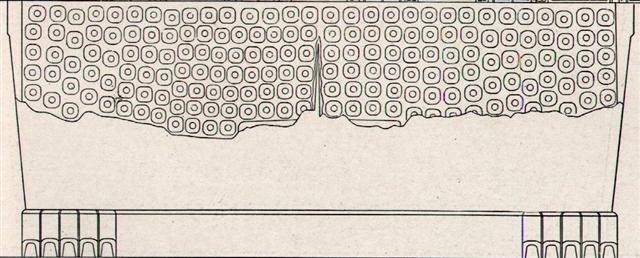|
TRANSLATIONS
"Mathematics was moving up to me from the depth of centuries; not after myth, but before it. Not armed with Greek rigor, but with the imagination of astrological power, with the understanding of astronomy. Number gave the key. Way back in time, before writing was even invented, it was measures and counting that provided the armature, the frame on which the rich texture of real myth was to grow." (Hamlet's Mill) Next page is the summary page for mea ke:
Before moving on into the pages of the excursion I must point out that vae glyphs always are oriented with knee forward. If the creator of P had wished to give a meaning inverse to that of the ordinary vae glyphs he could not have turned it around.
Writing about the moon instead of the sun (in the 'moon key' instead of the 'sun key'), yet telling about winter solstice, he could not use the ordinary vae glyph type - because it was used for telling about sun leaving. Compressing the vae into a curved shape would result in two effects: it would look like a waxing moon crescent and a curved shape signifies the end of the 'journey'. ... The dream soul came to Rangi Meamea and looked around searchingly. The dream soul spoke: 'Here at last is level land where the king can live.' She named the place 'Rangi Meamea A Hau Maka O Hiva'. The mountain she named 'Peke Tau O Hiti A Hau Maka O Hiva'. The dream soul moved along a curve from Peke Tau O Hiti to the mountain Hau Epa, which she named 'Maunga Hau Epa A Hau Maka O Hiva' ...
I cannot stop thinking about mea = 'red' being related to mea = 'different'. At the top of the mountain a different view appears. Beheading a fish the gills (mea) will be seen.
At the middle (vaega) Marduk divided (vae) the night.
|


